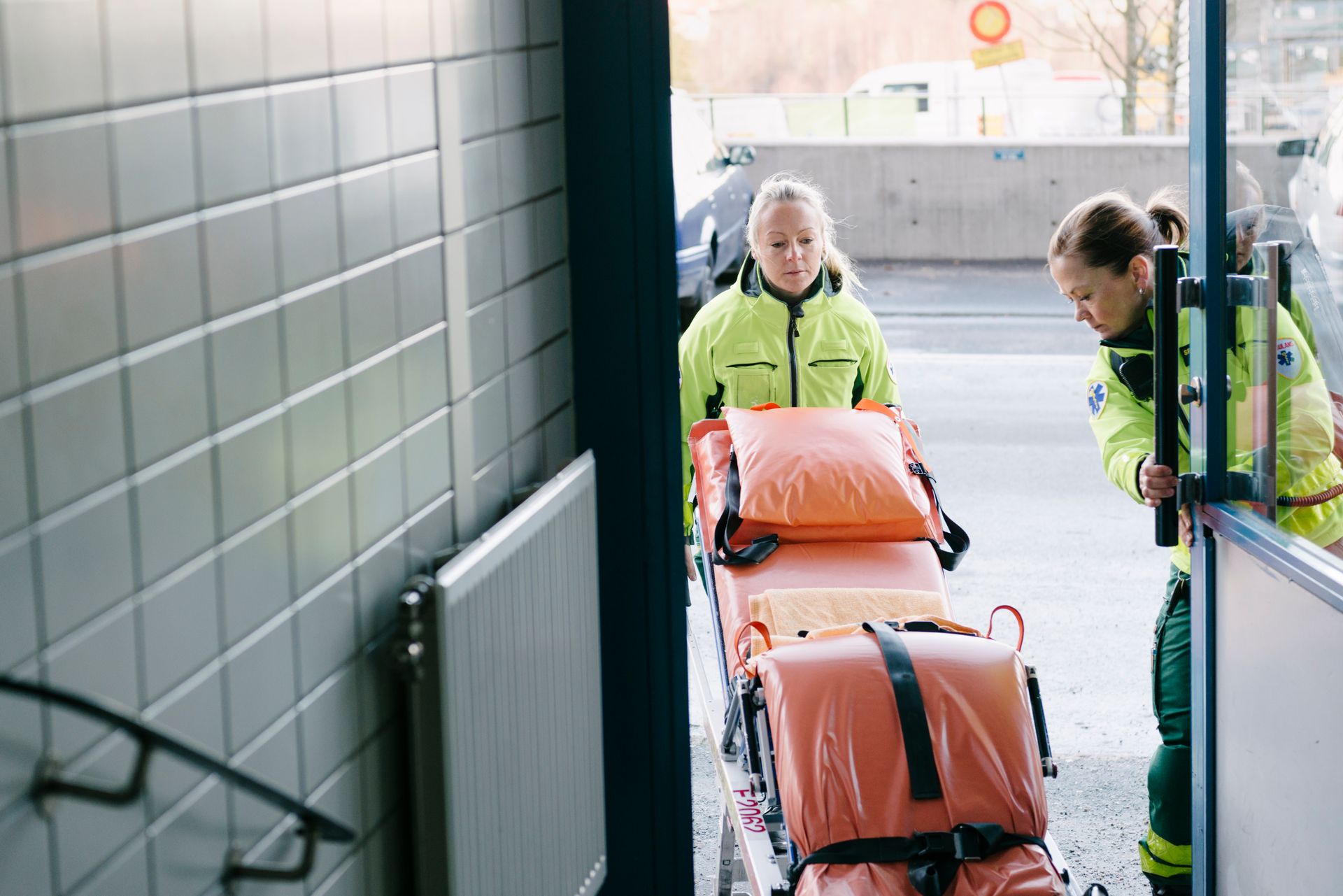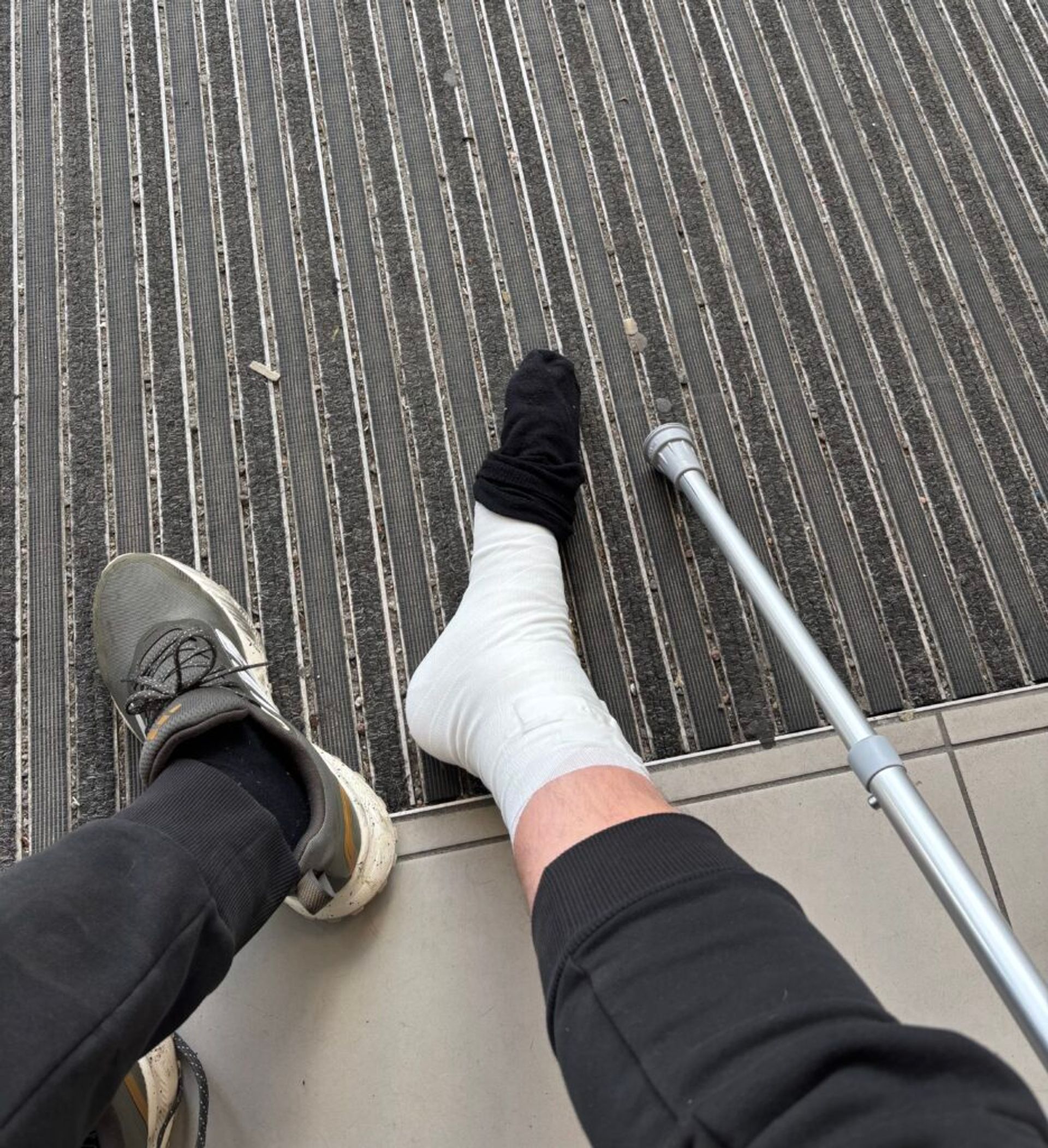
Written by Annamaria
31 May 2025
It was a typical Saturday morning. My boyfriend got up early and headed out. It had rained overnight, as usual, leaving the road slightly wet. Then, in the blink of an eye, something happened… He fell off a bike and broke his ankle. Accidents can happen to anyone, anytime. If you ever find yourself injured in Sweden, here’s a clear, step-by-step guide on what to do to get the help you need.
Stay calm and assess the situation
First, take a deep breath and try to stay calm. Check the injury, is it severe? Can you move safely, or is it best to stay put? Do you need the ambulance? Do you have anything broken? If you’re in pain or unsure about the severity, don’t push yourself. Sometimes shock or adrenaline can mask how serious the injury really is.
Real situation
My boyfriend was only about 300 metres from our apartment when he got injured. He realised he can’t continue, so he decided to get back home. Luckily, people were passing by so that he could ask for help. A woman offered to escort him home.
Call someone or ask for help
If you’re alone, don’t hesitate to reach out for help. Call a friend who lives nearby who can come to support you. If you’re in a public place, don’t be afraid to ask people passing by for assistance. Most people are willing to help when someone is injured.
Sweden’s emergency number, 112, is for serious emergencies, such as severe injuries, heavy bleeding, unconsciousness, or situations where you can’t get to a hospital any other way. If your injury isn’t life-threatening and you’re able to get to a healthcare facility safely, it’s best to avoid calling 112 to keep emergency lines open for those in urgent need.

For non-emergency medical advice, you can call 1177. It’s staffed by nurses who can guide you on whether you need to see a doctor, visit a health center, or handle your injury at home. The 1177 service is available 24/7 and is a great resource if you’re unsure about the next steps.
Real situation
When he got home, he called a friend who was supposed to meet him at the swimming hall. The friend had a car, so he could drive him to the emergency room. They also called 112 because his ankle was swollen like a balloon, but they were informed that since the friend has a car, it would be quicker to bring my boyfriend to the emergency room and not wait for an ambulance.
Visit the emergency room
If the injury requires medical attention, visit a local health center (vårdcentral) or a hospital emergency department (akutmottagning). Most towns have health centers where you can get care for non-life-threatening injuries. When you get to the hospital or health center, have your ID and health insurance card ready. If you have a European Health Insurance Card (EHIC) or private insurance, bring those details too.
Sweden’s healthcare system is publicly funded, meaning residents pay a small patient fee for visits, but most costs are covered by the state. For international students studying in Sweden, healthcare is generally covered if you have a Swedish personal identity number (personnummer) and are registered with the Swedish Tax Agency.
Get a diagnosis
Once you’re at the healthcare facility, a doctor or nurse will ask how you got injured, evaluate your injury, and may order tests such as X-rays or scans to determine the exact nature and extent of the damage. Getting a clear diagnosis is essential for proper treatment and recovery. Don’t hesitate to ask questions if anything is unclear. Understanding your injury helps you take the right steps moving forward. Also, don’t worry, the staff will most likely speak fluent English!
Real situation
The medical staff carefully examined his foot and assessed other vital functions before deciding to perform an X-ray. The imaging revealed that he had two fractures. Fortunately, both were hairline fractures, small cracks in the bone, that did not require surgery or a traditional cast.
In Sweden, treatment for these types of injuries tends to be minimal and focused on allowing natural healing, often involving pain management, limited immobilisation (like a brace or supportive footwear), and gradual rehabilitation. This approach helps patients recover comfortably without unnecessary interventions.

Follow the doctor’s instructions
After receiving your diagnosis, it’s important to follow your doctor’s instructions closely. Whether it’s resting, taking medication, or doing recommended exercises or physical therapy, proper care is crucial for healing after getting injured.
Real situation
He was told that he should rest and take it slow for a couple of days and then get in touch with a physiotherapist. The physiotherapists at the health centre were not available, but he managed to get an appointment with a private provider. She gave him exercises to do at home and further instructions on how to use the foot carefully. The appointment was cost-free.
Get better 🙂
Injuries are never fun, but with the right care and a bit of patience, you’ll be back on your feet in no time. Remember to rest, listen to your body, and give yourself the time you need to heal.

Wishing you a smooth and speedy recovery! Did you ever get injured in Sweden or do you have any more questions about visiting a doctor in Sweden? Feel free to leave a comment below.





